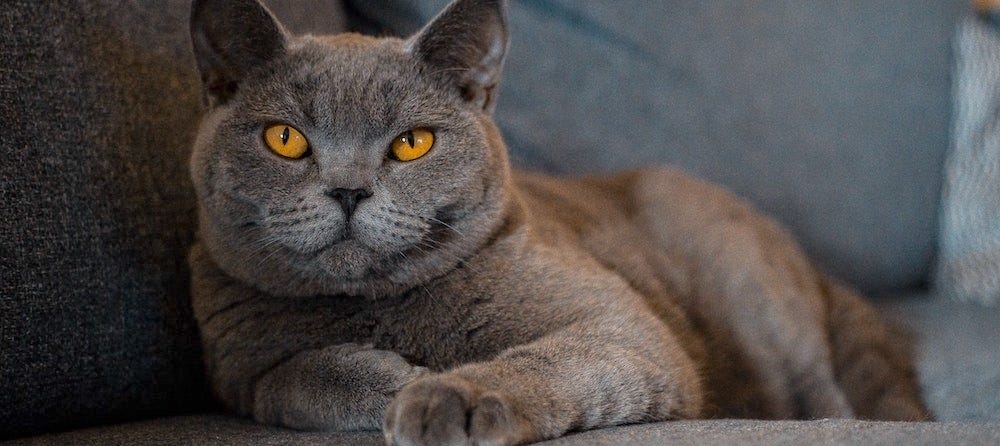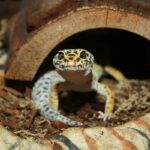Table of Contents
The British Shorthair cat is known for its sturdy build, round face, and dense coat. This breed is beloved for its calm demeanor and affectionate nature. Understanding the breeding profile of the British Shorthair cat can help potential owners and breeders appreciate the unique qualities of this charming feline. Here’s a comprehensive guide to the key characteristics and care tips for the British Shorthair.

Key Characteristics of the British Shorthair Cat
1. Appearance
The British Shorthair is a medium to large-sized cat with a robust and muscular body. They have a broad chest, strong legs, and a thick tail with a rounded tip. Their most distinctive feature is their round face, characterized by large, round eyes and full cheeks. Their coat is short but dense and plush, coming in a variety of colors and patterns. For more on the breed’s appearance, visit CFA British Shorthair.
2. Personality and Temperament
British Shorthairs are known for their calm and easygoing nature. They are affectionate without being overly demanding and enjoy the company of their human companions. These cats are generally good with children and other pets, making them excellent family pets. For more on personality traits, see Vetstreet British Shorthair.
3. Health and Lifespan
The British Shorthair is a relatively healthy breed with a lifespan of 12-20 years. However, they can be prone to certain genetic conditions, such as hypertrophic cardiomyopathy (HCM) and obesity. Regular veterinary check-ups and a balanced diet are essential for maintaining their health. For more on health considerations, visit PetMD British Shorthair.
4. Grooming Needs
Despite their dense coat, British Shorthairs have relatively low grooming needs. Weekly brushing is usually sufficient to remove loose hairs and keep their coat in good condition. During shedding seasons, more frequent brushing may be necessary. Regular dental care and nail trimming are also important. For grooming tips, see The Spruce Pets British Shorthair.
5. Feeding and Nutrition
A balanced diet is crucial for the British Shorthair’s health. These cats can be prone to obesity, so it’s important to monitor their food intake and provide a diet that meets their nutritional needs without overfeeding. Consult your veterinarian for recommendations on the best diet for your British Shorthair. For more on feeding, visit Royal Canin British Shorthair.
6. Exercise and Enrichment
While British Shorthairs are not as active as some other breeds, they still need regular exercise to stay healthy. Provide toys, climbing structures, and interactive play sessions to keep them engaged. Puzzle toys can also help stimulate their minds and prevent boredom. For more on exercise needs, see Petfinder British Shorthair.
7. Breeding Considerations
Breeding British Shorthairs requires careful selection to maintain the breed’s health and characteristics. Responsible breeders should screen for genetic conditions and aim to improve the breed with each generation. It’s also important to provide a nurturing environment for both the queens and the kittens. For more on breeding practices, visit TICA British Shorthair.
Conclusion on the Breeding Profile of the British Shorthair Cat
The British Shorthair is a wonderful breed known for its distinctive appearance and gentle temperament. By understanding the breeding profile of the British Shorthair cat and following proper care guidelines, you can ensure that your British Shorthair remains healthy and happy. Regular grooming, a balanced diet, and adequate exercise are key to maintaining their well-being. For more pet care tips, check out our Pet Care Guide.
FAQs on the Breeding Profile of the British Shorthair Cat
What is the typical lifespan of a British Shorthair cat?
British Shorthair cats typically have a lifespan of 12-20 years, provided they receive proper care and regular veterinary check-ups.
Are British Shorthair cats good with children?
Yes, British Shorthair cats are known for their calm and gentle nature, making them good companions for children and other pets.
How often should I groom my British Shorthair cat?
Weekly brushing is usually sufficient for a British Shorthair, but more frequent grooming may be needed during shedding seasons.
What health issues are common in British Shorthair cats?
Common health issues in British Shorthair cats include hypertrophic cardiomyopathy (HCM) and obesity. Regular vet visits and a balanced diet can help manage these conditions.
What should I feed my British Shorthair cat?
Provide a balanced diet that meets your cat’s nutritional needs and monitor their food intake to prevent obesity. Consult your veterinarian for specific dietary recommendations.
How much exercise does a British Shorthair cat need?
While not as active as some breeds, British Shorthair cats still need regular exercise. Provide toys, climbing structures, and interactive play to keep them engaged.











